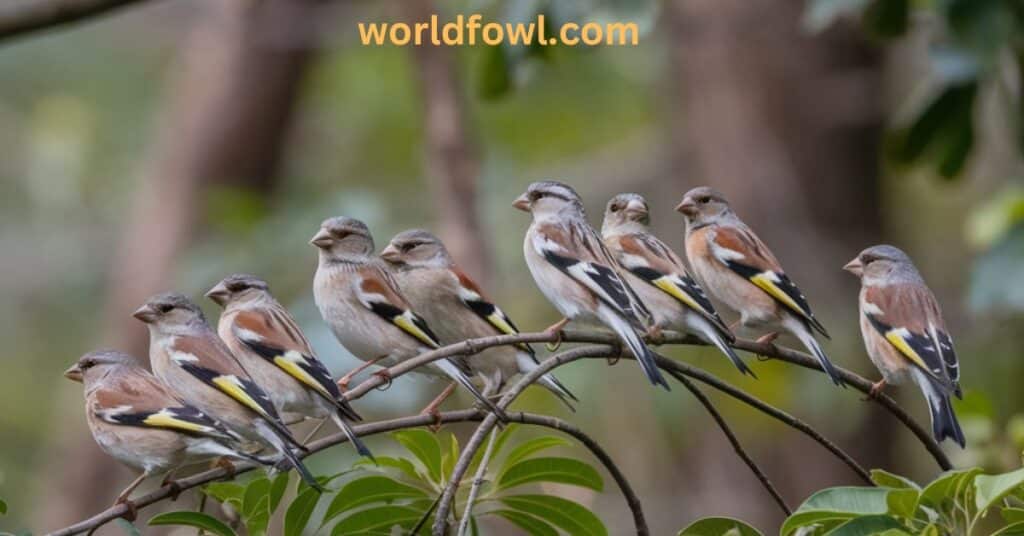Introduction
North Carolina is home to a diverse array of finch species, each with its own unique features and behaviors. These small, seed-eating birds play a vital role in the state’s ecosystems, from pollinating flowers to dispersing seeds. Whether you’re an avid birdwatcher or simply enjoy observing the feathered visitors to your backyard, this comprehensive guide will help you discover the captivating world of Finches in North Carolina
In the pages ahead, we’ll explore the six primary North Carolina finch species: the American Goldfinch, Evening Grosbeak, House Finch, Pine Siskin, Purple Finch, and Red Crossbill. You’ll learn about their physical characteristics, preferred habitats, feeding habits, and nesting behaviors, as well as the best times and locations to spot these feathered friends. We’ll also discuss the importance of finches in North Carolina and provide resources for further learning and appreciation of these remarkable birds.
So, let’s dive in and uncover the fascinating details of the NC finches, from the vibrant American Goldfinch to the elusive Red Crossbill. Get ready to enhance your understanding and deepen your connection with the avian wonders that call the Tar Heel State home.
American Goldfinch
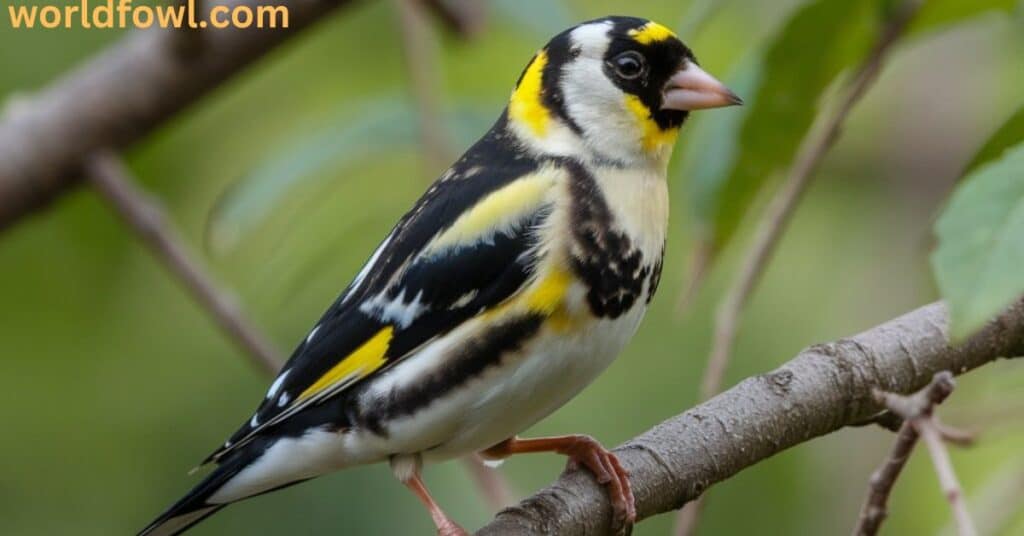
The American Goldfinch is perhaps one of the most recognized and beloved finch species in NC. With its striking bright yellow plumage and black cap, wings, and tail, the American Goldfinch is a true standout among the state’s avian residents.
Physical Characteristics
Adult American Goldfinches measure approximately 4.5 to 5.1 inches (11.5 to 13 cm) in length and have a wingspan of 7.9 to 8.7 inches (20 to 22 cm). During the breeding season, the male’s vibrant yellow feathers and black cap and wings make it easy to identify. Females and non-breeding males, on the other hand, have a more subdued olive-brown and gray coloration.
Habitat and Range
They are particularly abundant in the Piedmont and Mountain regions of the state, where they thrive on the abundance of thistle, sunflower, and other seed-bearing plants. In the winter months, their distribution expands as they move to areas with a more plentiful food supply, such as bird feeders in residential neighborhoods.
Feeding Habits
The American Goldfinch is primarily a seed-eater, with a diet consisting of a wide variety of plant seeds, including those from thistle, sunflower, and nyjer plants. These small birds are particularly adept at extracting seeds from thistle heads, using their sharp, conical beaks to pry them open.
In addition to feeding on seeds, American Goldfinches will also occasionally consume insects, such as aphids, during the breeding season when they need additional protein to fuel the demands of nesting and raising their young.
Nesting and Breeding
Unlike many other finch species, American Goldfinches are late breeders, with their nesting season typically occurring from June to September. This timing coincides with the peak availability of their preferred seed-bearing plants.
The female lays 4 to 6 pale blue or white eggs, which she incubates for 12 to 14 days. Both parents share in the duties of feeding the nestlings, which fledge after approximately 12 to 17 days.
Sightings and Conservation
American Goldfinches are a common sight across much of North Carolina, particularly in areas with abundant seed-bearing plants and bird feeders. The best times to spot them are during the spring and summer months, when their bright yellow plumage is on full display.
Encouraging the growth of native plants and maintaining well-stocked bird feeders can help support these delightful finches in your local environment.
Evening Grosbeak
However, its distinctive appearance and intriguing behaviors make it a sought-after addition to any birdwatcher’s list.
Physical Characteristics
The Evening Grosbeak is a large finch, measuring 6.7 to 8.3 inches (17 to 21 cm) in length and having a wingspan of 11.8 to 13.8 inches (30 to 35 cm). Males are particularly eye-catching, with their bright yellow heads, black wings and tails, and large, powerful beaks. Females, on the other hand, have a more subdued olive-brown coloration.
This beak gives the bird a somewhat puffy-faced appearance, adding to its unique and distinctive look.
Habitat and Range
They prefer habitats with a good supply of seed-bearing trees, such as spruce, fir, and pine.
In the winter months, they may venture farther east, often appearing at backyard bird feeders in search of a reliable food source.
you may also like: Herons In Michigan – The Complete Guide To 8 Michigan Herons
Feeding Habits
The Evening Grosbeak is an opportunistic feeder, with a diverse diet that includes a variety of seeds, nuts, and even some insects. They are particularly fond of the seeds of cone-bearing trees, such as spruce and pine, as well as sunflower seeds and nyjer seed.
These finches often forage in large, noisy flocks, working together to crack open the tough shells of their prey. Their powerful beaks allow them to tackle even the hardest-shelled seeds with ease.
Nesting and Breeding
The nesting and breeding habits of the Evening Grosbeak in North Carolina are not as well-documented as some other finch species. They typically build their nests high up in coniferous trees, using a variety of materials such as twigs, moss, and grass.
The female Evening Grosbeak lays 3 to 5 eggs, which she incubates for approximately 13 to 14 days. Both parents share in the responsibilities of feeding the nestlings, which fledge after around 14 to 17 days.
Sightings and Conservation
Evening Grosbeaks can be a bit unpredictable in their appearances, with their numbers and distribution in North Carolina fluctuating from year to year.
Maintaining healthy coniferous forests and providing supplemental feeding can help support these unique finches in North Carolina.
House Finch
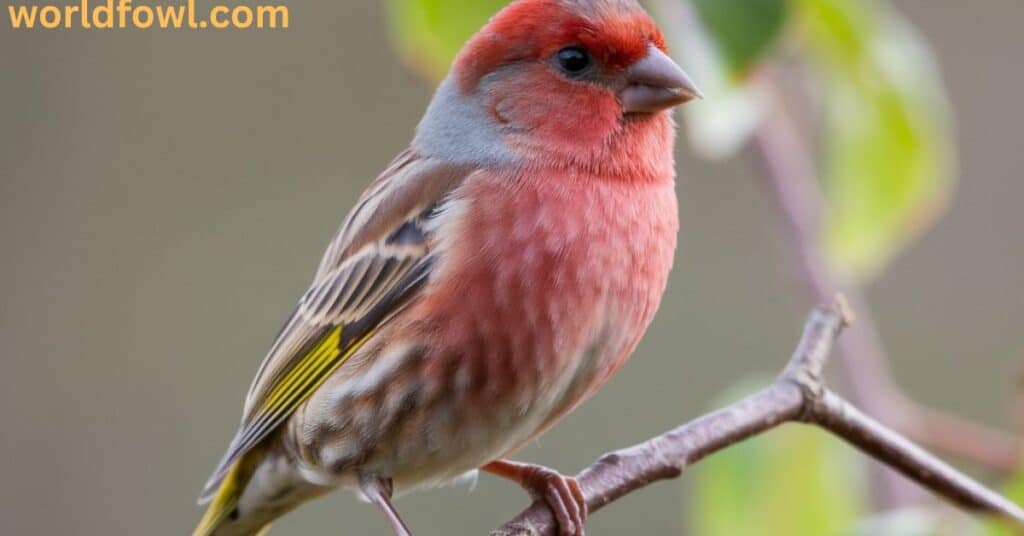
The House Finch is perhaps one of the most ubiquitous and adaptable finch species found throughout North Carolina. Originally native to the western United States, this finch has successfully expanded its range across the country, making it a familiar sight in both rural and urban areas.
Physical Characteristics
House Finches are relatively small finches, measuring 5.1 to 5.5 inches (13 to 14 cm) in length and having a wingspan of 7.9 to 9.8 inches (20 to 25 cm). During the breeding season, the male House Finch displays vibrant red plumage on its head, breast, and rump, while the female and non-breeding male have a more subdued brown and gray coloration.
Habitat and Range
They thrive in a wide range of habitats, including suburban and urban areas, parks, gardens, and forest edges.
The House Finch’s adaptability and willingness to use human-provided resources, such as bird feeders, have contributed to its successful expansion across the state. They are particularly common in areas with a mix of natural and human-modified landscapes.
you can read : How and Where Do Geese Sleep? The Secrets of Goose Slumber
Feeding Habits
The House Finch is an opportunistic feeder, with a diet that consists primarily of seeds, berries, and other small fruits. They are particularly fond of sunflower seeds, nyjer seed, and the seed heads of plants like thistle and dandelion.
Nesting and Breeding
House Finches are prolific breeders, with the nesting season typically extending from early spring to late summer. They construct their nests in a variety of locations, including tree cavities, building ledges, and even hanging plant baskets.
The female House Finch lays 2 to 6 eggs, which she incubates for approximately 12 to 14 days. Both parents share in the responsibilities of feeding the nestlings, which fledge after around 12 to 19 days.
Sightings and Conservation
House Finches are a common sight throughout North Carolina, with their bright red plumage and lively songs making them easy to spot, especially during the breeding season. They are often found in mixed flocks with other finch species at backyard bird feeders or foraging in open areas.
While the House Finch is not considered a threatened species, their populations can be affected by factors such as disease outbreaks, habitat loss, and competition from non-native species. Maintaining a diverse and healthy ecosystem, as well as providing supplemental feeding, can help support these adaptable finches in your local area.
Pine Siskin
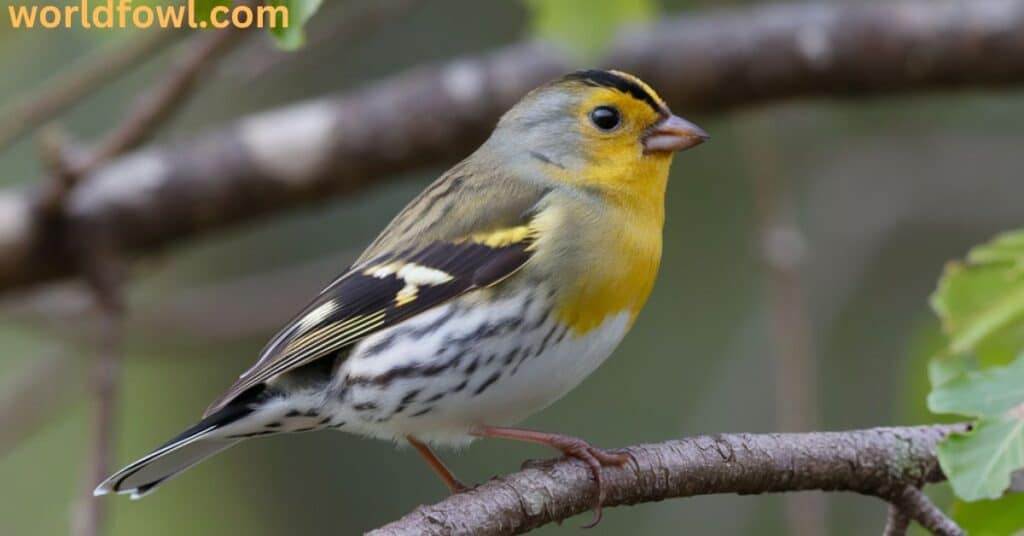
The Pine Siskin is a small, striped finch that is known for its erratic movements and unpredictable appearances in North Carolina. While not as widespread as some other finch species, the Pine Siskin’s unique behaviors and appearance make it a fascinating addition to the state’s avian diversity.
Physical Characteristics
Pine Siskins are relatively small finches, measuring 4.3 to 5.1 inches (11 to 13 cm) in length and having a wingspan of 7.1 to 8.7 inches (18 to 22 cm). They have a distinctive appearance, with a slim, pointed beak and a heavily streaked brown and yellow plumage that helps them blend in with the foliage of their coniferous forest habitats.
One of the Pine Siskin’s most noticeable features is its sharp, pointed bill, which is adapted for extracting seeds from the cones of pine, spruce, and other coniferous trees.
you can read: Parrots in Florida – The Complete Guide To Wild Parakeets In Florida
Habitat and Range
In North Carolina, Pine Siskins are primarily found in the western mountain regions, particularly in areas with dense stands of pine, spruce, and fir trees. They prefer higher-elevation habitats, often nesting and feeding in the canopy of these evergreen forests.
However, the Pine Siskin’s distribution can be quite unpredictable, as they are known to undergo irruptive migrations, with their numbers and locations varying greatly from year to year. During these movements, they may venture further east, occasionally appearing in the Piedmont and even the coastal regions of the state.
Feeding Habits
The Pine Siskin is a specialized feeder, relying heavily on the seeds of coniferous trees as its primary food source. These finches are adept at extracting seeds from the cones of pines, spruces, and other evergreens, using their sharp, pointed beaks to pry them open.
In addition to conifer seeds, Pine Siskins will also consume a variety of other seeds, including those from thistles, sunflowers, and other plants. They may also supplement their diet with small insects, particularly during the breeding season.
Nesting and Breeding
The nesting habits of Pine Siskins in North Carolina are not as well-documented as some other finch species. They typically build their nests high up in the canopy of coniferous trees, using a variety of materials such as twigs, moss, and grass.
The female Pine Siskin lays 3 to 5 eggs, which she incubates for approximately 12 to 13 days. Both parents share in the duties of feeding the nestlings, which fledge after around 12 to 16 days.
Sightings and Conservation
Pine Siskins can be a bit of a challenge to spot in North Carolina, as their numbers and distribution can be quite unpredictable.
Maintaining healthy coniferous forests and providing supplemental feeding during periods of low natural food availability can help support these unique finches in North Carolina.
Purple Finch
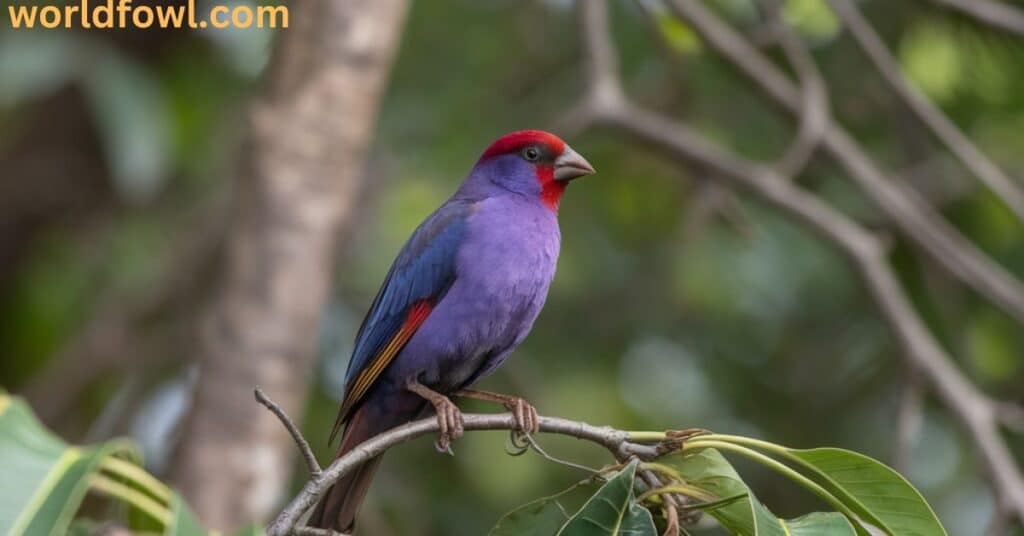
Though not as ubiquitous as its counterpart, the Purple Finch is a fascinating addition to North Carolina’s avian diversity.
Physical Characteristics
Purple Finches are slightly larger than House Finches, measuring 5.1 to 6.3 inches (13 to 16 cm) in length and having a wingspan of 8.7 to 10.2 inches (22 to 26 cm).
One of the key differences between the Purple Finch and the House Finch is the shape of their beaks. The Purple Finch’s beak is slightly larger and more rounded, giving it a slightly different appearance and feeding behavior
you can read: Why Don’t I Hear Mourning Doves Anymore? Reasons & Misconceptions
Feeding Habits
The Purple Finch is an opportunistic feeder, with a diet that includes a variety of seeds, berries, and small insects. They are particularly fond of the seeds of coniferous trees, such as pine and spruce, as well as those from deciduous trees like maple and oak.
Nesting and Breeding
The nesting and breeding habits of Purple Finches in North Carolina are not as well-documented as some other finch species. They typically construct their nests high up in the branches of trees, using a variety of materials such as twigs, grass, and moss.
The female Purple Finch lays 3 to 5 eggs, which she incubates for approximately 12 to 14 days. Both parents share in the responsibilities of feeding the nestlings, which fledge after around 12 to 16 days.
Sightings and Conservation
Purple Finches can be a bit more elusive than some of their finch counterparts in North Carolina, with their numbers and distribution fluctuating from year to year.
Purple Finch (continued)
particularly during the winter months, when they may visit backyard bird feeders in search of a reliable food source.
Maintaining healthy, diverse forest ecosystems and providing supplemental feeding can help support these unique finches in North Carolina.
Red Crossbill
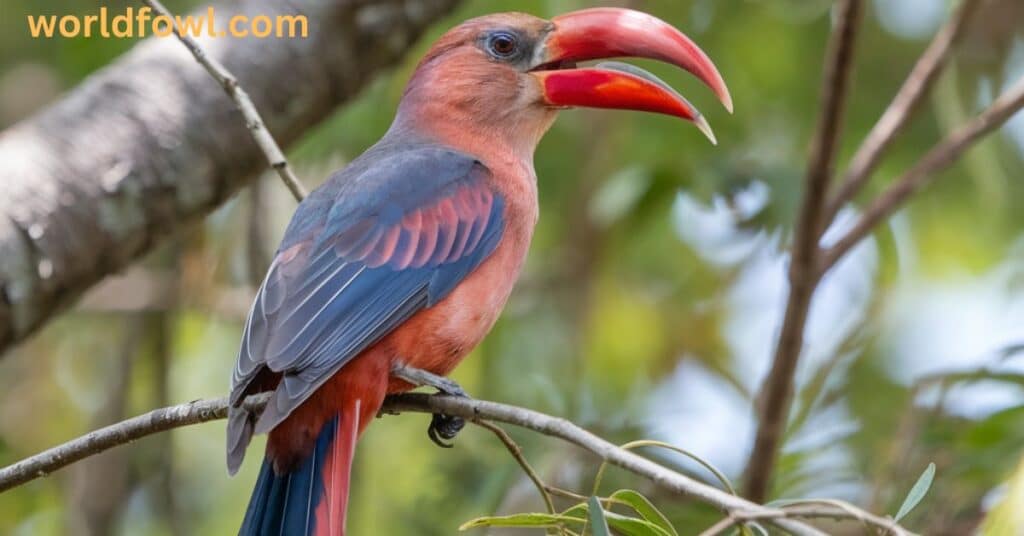
Its distinctive crossed bill and irruptive movements make it a captivating addition to the state’s avian diversity.
Physical Characteristics
The Red Crossbill is a medium-sized finch, measuring 5.9 to 6.7 inches (15 to 17 cm) in length and having a wingspan of 9.8 to 11.0 inches (25 to 28 cm). The most distinctive feature of this species is its unique, crossed bill, which is an adaptation for efficiently extracting seeds from conifer cones.
In terms of plumage, male Red Crossbills typically have a red or orange-red head, back, and rump, while females and immature birds display more olive-green and yellow tones. This color variation can make identification of individual birds challenging.
Habitat and Range
They prefer high-elevation habitats, often nesting and foraging in the canopy of these evergreen forests.
Feeding Habits
Their uniquely shaped bills allow them to pry open the tightly closed scales of pine, spruce, and fir cones, giving them access to the nutrient-rich seeds within.
In addition to conifer seeds, Red Crossbills may also consume small amounts of other foods, such as insects or berries, but these items make up only a minor portion of their overall diet.
Nesting and Breeding
The nesting and breeding behaviors of Red Crossbills in North Carolina are not as well-documented as some other finch species found in the state. However, we do know that they typically construct their nests high up in the canopy of coniferous trees, using a variety of materials such as twigs, moss, and bark.
The female Red Crossbill lays 3 to 4 eggs, which she incubates for approximately 12 to 16 days. Both parents share in the responsibilities of feeding the nestlings, which fledge after around 15 to 22 days.
Interestingly, Red Crossbills can breed at any time of the year, with their breeding season often coinciding with the availability of their preferred conifer seed sources. This flexibility allows them to take advantage of changes in food availability, but it also makes their nesting habits more difficult to predict.
Sightings and Conservation
Spotting Red Crossbills in North Carolina can be a real treat for birdwatchers, but it requires patience and persistence.
Maintaining healthy, mature coniferous forests in the western mountain regions of the state is crucial for supporting these unique finches.
The Importance of Finches in North Carolina
Finches play a vital role in the ecosystems of North Carolina, contributing to the overall health and diversity of the state’s avian communities. These small, seed-eating birds serve as important pollinators, helping to disperse the seeds of the plants they feed on. They also provide a valuable food source for a variety of predators, from hawks and owls to snakes and small mammals.
Moreover, the presence of finches in your local environment can be an indicator of the overall ecological balance. Their numbers and diversity can reflect the health of your area’s plant communities, as well as the availability of suitable nesting and foraging habitats.
By attracting and supporting finches in your backyard or local parks, you can not only enjoy their vibrant colors and lively songs but also play a role in preserving the delicate balance of North Carolina’s natural ecosystems. Simple actions, such as providing bird feeders and planting native, seed-bearing plants, can go a long way in sustaining these remarkable birds.
Conclusion and Resources
In conclusion, the finches of North Carolina are a diverse and fascinating group of birds that offer endless opportunities for observation, appreciation, and conservation. From the bright yellow plumage of the American Goldfinch to the unique crossed bill of the Red Crossbill, each species brings its own unique charm and ecological significance to the state.
As you continue to explore and learn about the finches found in your local area, be sure to take advantage of the many resources available to birdwatchers and nature enthusiasts. Field guides, local birding clubs, and online communities can all provide valuable information and opportunities to connect with other passionate individuals who share your love of these remarkable birds.
Remember, by taking the time to observe, appreciate, and protect the finches of North Carolina, you are not only enhancing your own understanding and enjoyment of the natural world but also contributing to the long-term health and sustainability of the state’s diverse avian populations. So, grab your binoculars, fill up your bird feeders, and get ready to embark on an exciting journey of discovery among the finches of the Tar Heel State.

Henry James is a seasoned blogger and a passionate storyteller on “World Fowl.” With years of experience crafting engaging content, he brings a unique blend of expertise and creativity to his writing. Henry specializes in exploring diverse topics with depth and clarity, captivating readers worldwide.

